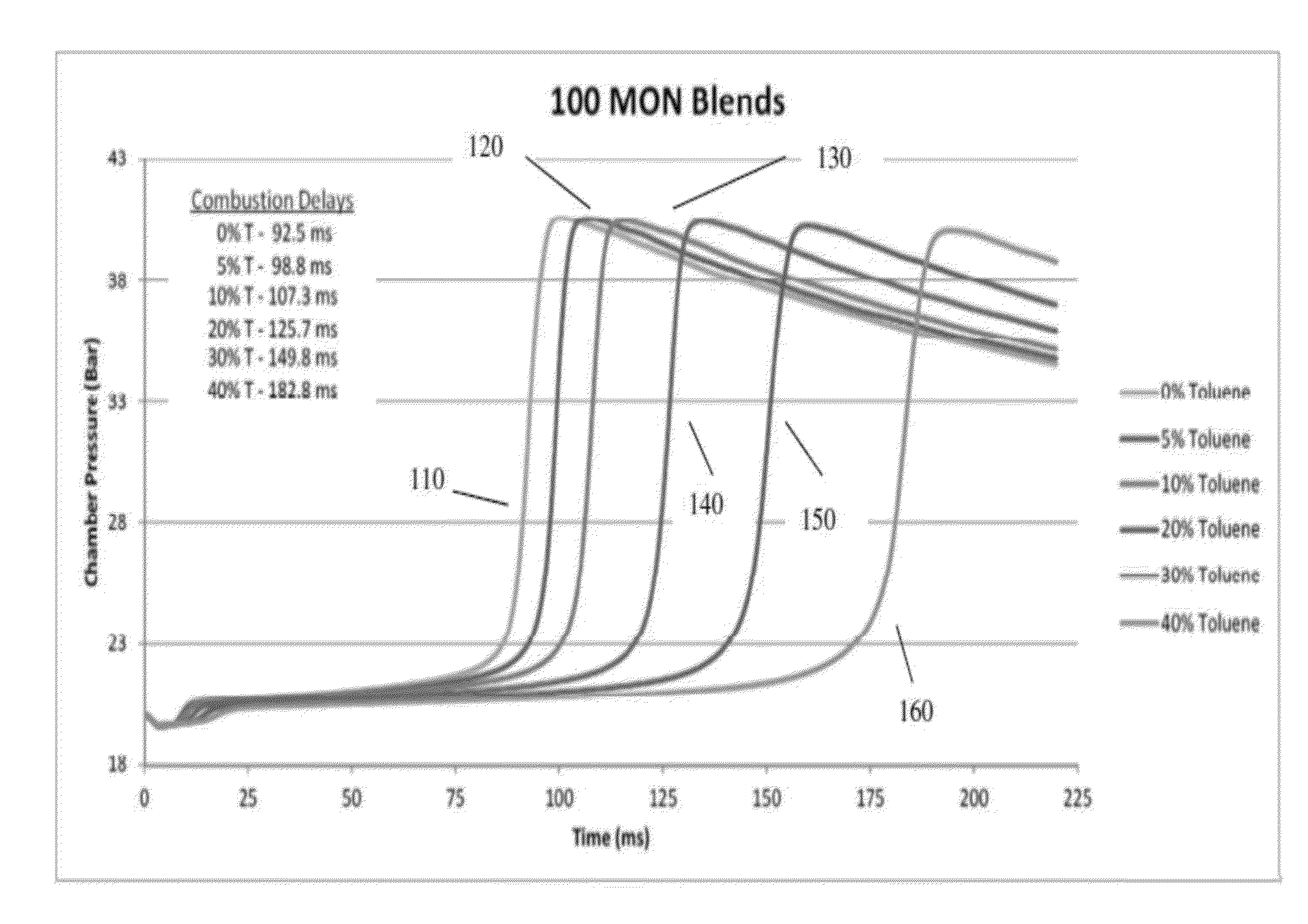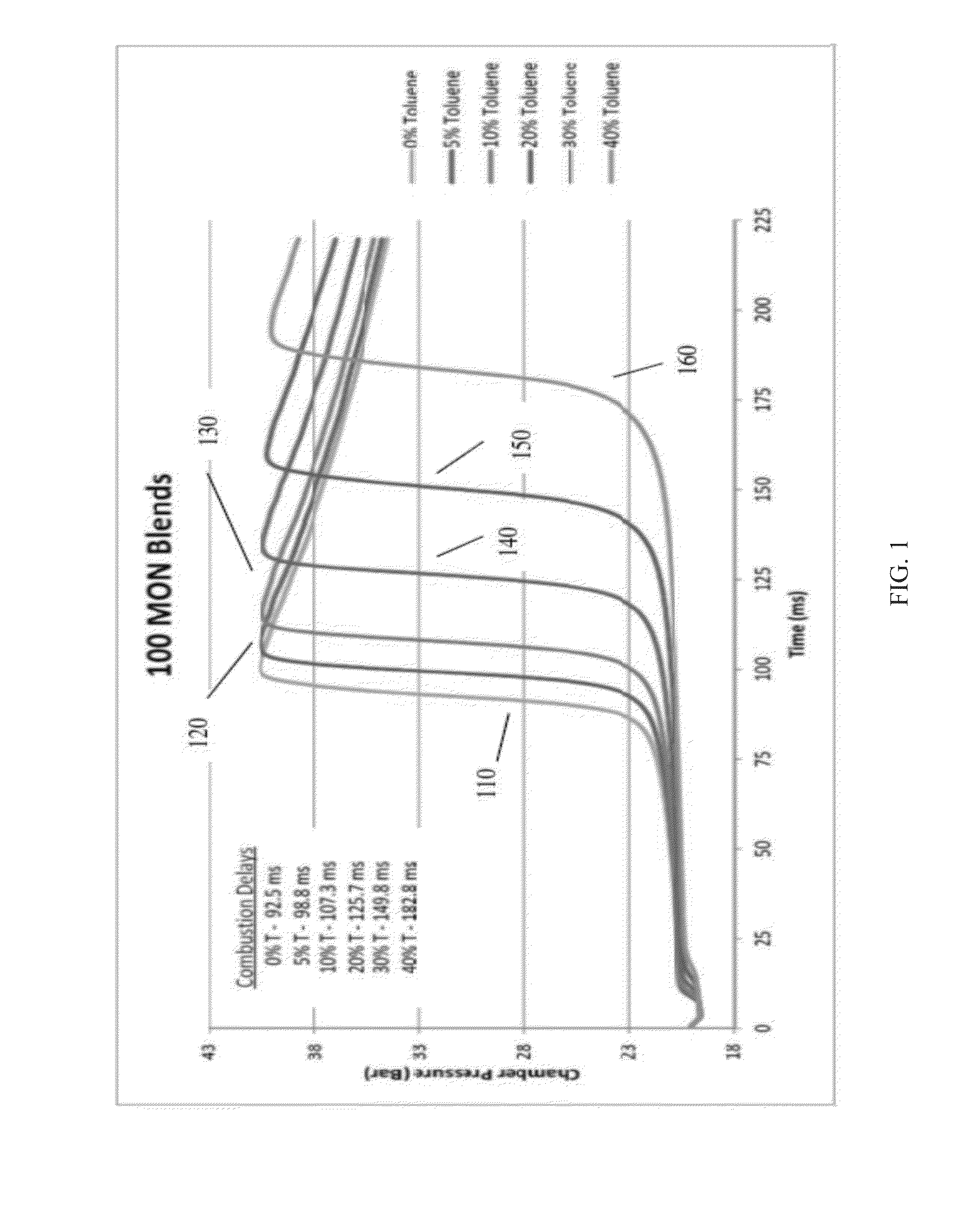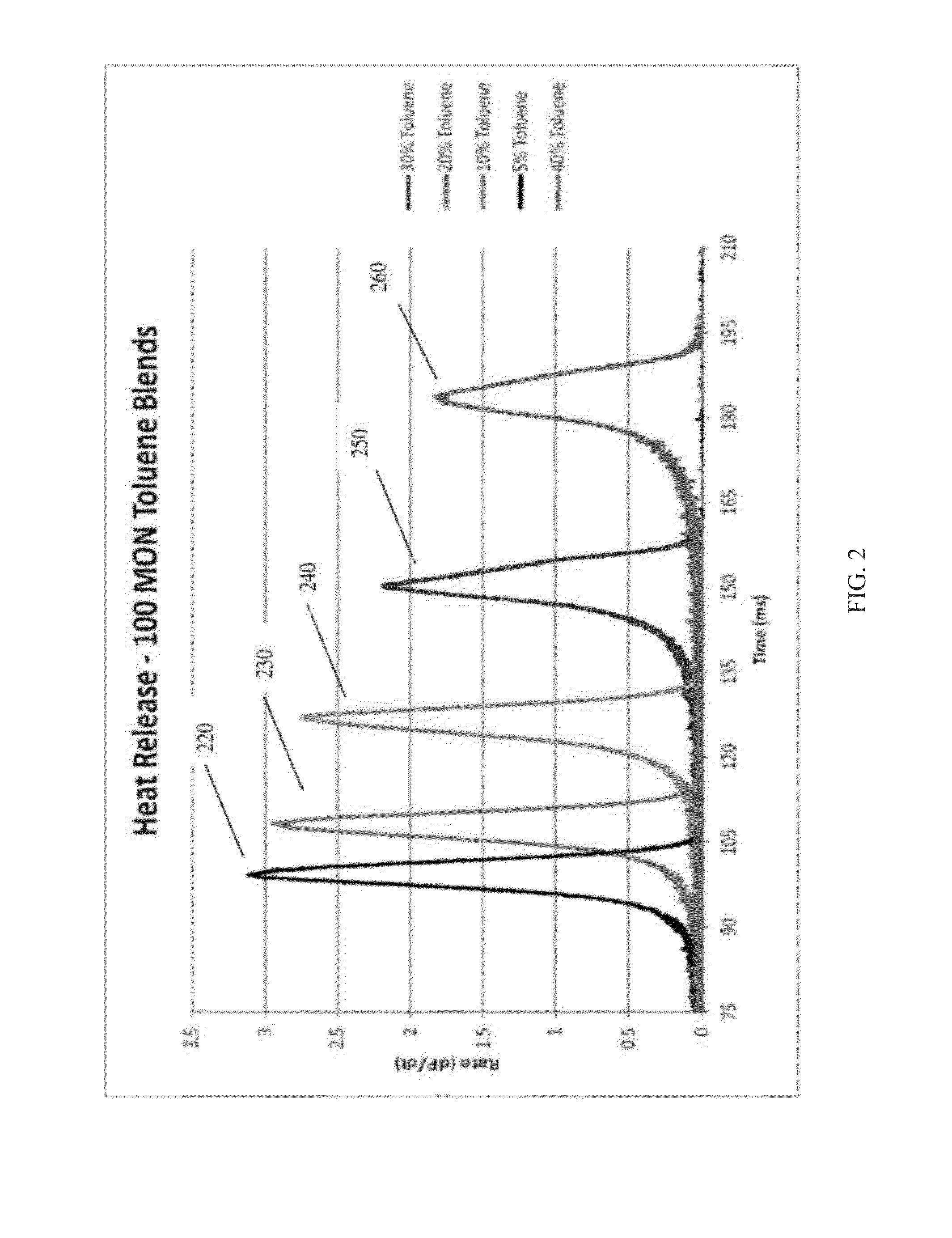Characterization of aviation gasoline
a technology for aviation gasoline and characterization, applied in chemical analysis using combustion, rapid change measurement, instruments, etc., can solve the problem that astm d909 is not suitable for characterization of unleaded gasolin
- Summary
- Abstract
- Description
- Claims
- Application Information
AI Technical Summary
Benefits of technology
Problems solved by technology
Method used
Image
Examples
embodiment 1
[0032] A method of characterizing a naphtha boiling range sample, comprising: injecting a naphtha boiling range sample having a final boiling point of about 170° C. or less into a constant volume combustion chamber at an injection pressure of at least about 10 barg (1 MPag), the constant volume combustion chamber containing an amount of oxygen corresponding to at least a stoichiometric amount relative to the fuel compounds in the naphtha boiling range sample; combusting the naphtha boiling range sample in the constant volume combustion chamber; measuring a pressure in the constant volume combustion chamber during a measurement time, the measurement time substantially including the combusting of the naphtha boiling range sample; and determining a combustion delay for the naphtha boiling range sample, the combustion delay being defined as a time from a start of the injecting of the naphtha boiling range sample to a time where a measured pressure in the constant volume combustion chamb...
embodiment 3
[0034] A method of characterizing a naphtha boiling range sample, comprising: combusting a plurality of aviation gasoline samples in one or more first constant volume combustion chambers; measuring a pressure in the one or more first constant volume combustion chambers during a measurement time for each of the combusted aviation gas samples; determining a combustion delay window based on the measured pressures for the combusted aviation gas samples, a combustion delay being defined as a time from a start of the injecting of the naphtha boiling range sample to a time where a measured pressure in the constant volume combustion chamber is at least about 10% of a maximum pressure measured in the constant volume combustion chamber during the measurement time; injecting a naphtha boiling range sample having a final boiling point of about 170° C. or less into a second constant volume combustion chamber at an injection pressure of at least about 10 barg (1 MPag), the constant volume combust...
embodiment 4
[0035] The method of Embodiment 3, the method further comprising: determining a curve characterizing a change in measured pressure during the measurement time for the plurality of aviation gasoline samples; determining a characteristic value window for the change in measured pressure during the measurement time for the plurality of aviation gasoline samples; determining a curve characterizing a change in measured pressure during the measurement time for the naphtha boiling range sample; determining a characteristic value for the change in measured pressure during the measurement time for the naphtha boiling range sample; and identifying the naphtha boiling range sample as being fit for purpose as an aviation gasoline based in part on the determined characteristic value for the naphtha boiling range sample being within the characteristic value window, the determined characteristic value optionally being a full-width half-maximum value.
[0036]Embodiment 5. The method of Embodiment 3 or...
PUM
 Login to View More
Login to View More Abstract
Description
Claims
Application Information
 Login to View More
Login to View More - R&D
- Intellectual Property
- Life Sciences
- Materials
- Tech Scout
- Unparalleled Data Quality
- Higher Quality Content
- 60% Fewer Hallucinations
Browse by: Latest US Patents, China's latest patents, Technical Efficacy Thesaurus, Application Domain, Technology Topic, Popular Technical Reports.
© 2025 PatSnap. All rights reserved.Legal|Privacy policy|Modern Slavery Act Transparency Statement|Sitemap|About US| Contact US: help@patsnap.com



